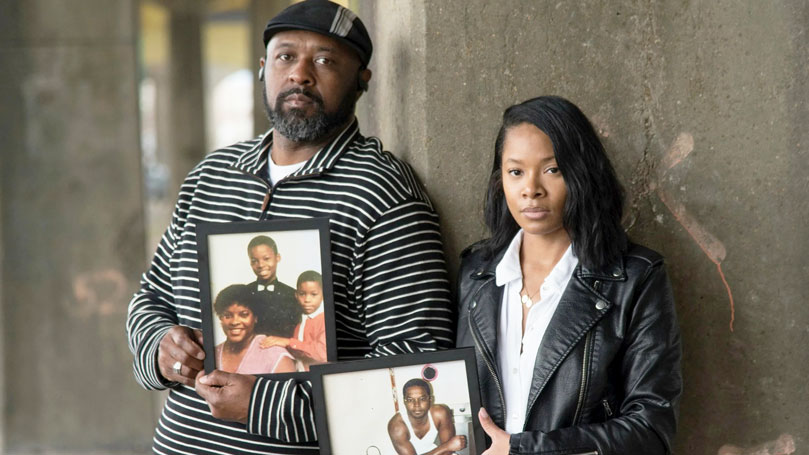
For 27 years, Toforest Johnson has been fighting the murder conviction that calls for his death. He claims he is innocent and should have a new trial. His claim is so convincing, a large and diverse group of legal experts from around the state publicly support him. Alabama still rejects his appeal.
The crime
On July 19, 1995, a Jefferson County Sheriff’s Deputy in uniform was working his second job as security guard at a Birmingham hotel. He was shot in the head in the hotel parking lot. Nearly a dozen alibi witnesses testified that Johnson was across town at the time. There was no physical evidence implicating him, and prosecutors changed theories about the crime five times in five different court proceedings.
Then there was the prosecution’s key witness, a woman who testified that she heard Johnson admit the crime. She said she over-heard the confession while she was eavesdropping on a three-way call to Johnson in jail. Ear witness testimony is not considered particularly reliable, especially if the witness is unfamiliar with the subject. In Johnson’s case, the woman never met Johnson or heard him speak, yet prosecutors treated her testimony as key to their case.
The prosecution hid the fact that their key witness was paid $5,000 for “earwitness” testimony, and had a history of offering testimony for money in other cases.
Prosecutors are supposed to share their evidence with the defense but in this case, the prosecution hid the fact that their key witness was paid $5,000 for her “earwitness” testimony. The state consistently and repeatedly denied she was paid. Seventeen years after the trial, a retired court employee came forward with a copy of the check to the witness. Attorneys investigated further and found the prosecution’s “key witness” had a history of offering testimony for money in other cases, casting even more doubt on her “earwitness” account.
Johnson’s appeal for a new trial has the support of the original trial prosecutor, four of the original trial jurors, two current and one former district attorney, two former governors, three former Alabama supreme court justices among others, and two former Alabama attorneys general. Former attorney general Bill Baxley, a staunch supporter of the death penalty, wrote a Washington Post op-ed saying the trial was seriously flawed and Johnson deserves a new trial.
Still, no new trial.
Death in Alabama
Toforest Johnson’s case is an example of several disturbing flaws in Alabama’s death penalty system. Indeed, the state has a reputation as an outlier in cases involving capital murder.
For instance, according to research conducted by the Death Penalty Information Center (DPIC), The Innocence Project, the Equal Justice Initiative (EJI), and the National Registry of Exonerations (NRE), Alabama has an embarrassing history of misconduct by police, prosecutors, and defense attorneys — especially in capital cases.
- Several cases involving defendants resulted in death, despite their diminished intellectual capacity or mental illness. Many times, defense attorneys fail to offer evidence of a client’s disability. Serious mental illness and IQs lower than 70 are usually considered mitigating circumstances influencing a jury’s decision on sentencing.
- Other accounts report the state compensation for court-ordered representation is so poor, few attorneys could afford to give their clients an adequate defense. In addition, there is no statewide Public Defender office, which means in many jurisdictions, the list of attorneys who volunteer or are court-ordered to defend the accused in capital cases consists mostly of young, inexperienced lawyers.
- Black jury candidates were often excused during jury selection in trials where the defendant is Black. It was not uncommon to see all white juries for Black defendants.
- Results of the research suggest a common form of misconduct is withholding information that should be shared with the defense and acknowledged in court. Johnson’s case is just one of many examples.
- Alabama still allows the death penalty even if the jury verdict is not unanimous. In 2023, the state legislature considered a change in the law, requiring unanimous verdicts for death. But time ran out before legislators could vote. Johnson is on death row because of a non-unanimous verdict.
Judicial override
In 2017, Alabama was the last state to pass a law abolishing the practice of judicial override. Judicial override allows judges to overrule a jury’s sentencing verdict. However, the law was not retroactive, which according to the Equal Justice Initiative, means nearly 20% of Alabama current death row inmates — 30 people, including Toforest Johnson — would not be facing execution if they were in any other state.
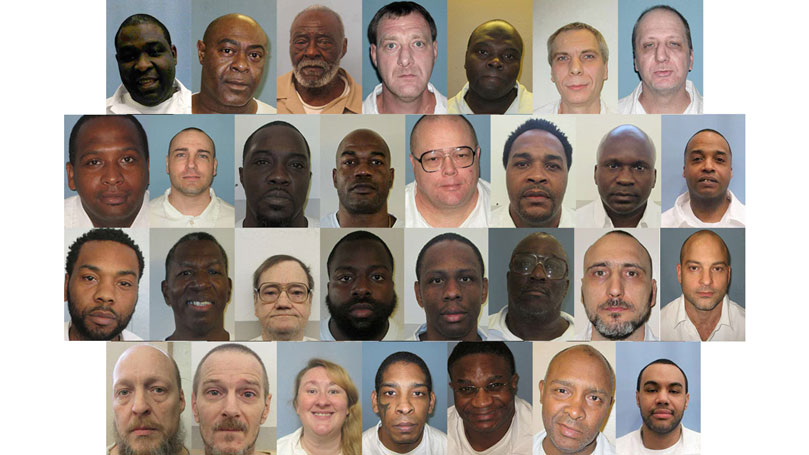
Johnson’s case and others brought attention to the practice of judicial override. While most states require the verdict to be unanimous to sentence a person to death, a small number, Alabama included, allowed judges to override non-unanimous verdicts. And overriding a unanimous verdict for life in prison was not unheard of. But in Johnson’s case, the jury voted 10-2 in favor of the death penalty. So even with two jurors objecting, Johnson got the death penalty.
Alabama judges exercised the right to override 112 times since 1976. (That was the year the U.S. Supreme Court reinstated capital punishment with its Gregg v. Georgia ruling, just four years after striking it down in Furman v. Georgia.) According to the EJI, 91% of overrides were in favor of death penalties, even if the jury voted in favor of life in prison. Of the 78 people executed in Alabama since 1983, 12 were murdered by the state despite the jury voting for life in prison.
Researchers say but for judicial override, Alabama’s death row numbers would be much lower. As of December 2024, Alabama had 157 prisoners on death row. The only states with higher numbers are California, Florida, and Texas. But according to the latest Census, these states have many times the population of Alabama. So, the per capita number of executions last year in Alabama was the highest in the country.
If a judge is to have final say over the verdict, why have a jury at all?
The obvious question, then: If a judge is to have final say over the verdict, why have a jury at all? Jurors whose verdicts have been overridden are left feeling that the trial experience was a waste of time, that the jury’s role is nothing but a charade. Others who oppose judicial override say the practice goes against the U.S. Constitution, which lays out the role of judges and juries. They claim that judicial override:
- violates amendments to the constitution pertaining to due process and cruel and unusual punishment — i.e. that jury decisions should be binding,
- undermines the role of the jury,
- is vulnerable to politics, especially during election years “when the proportion of death sentences imposed by override is elevated,”
- and is blighted by racial bias.
Racism
The racist dimensions of the death penalty system is a national problem deeply rooted in U.S. history. In 2020, the Death Penalty Information Center (DPIC) released a report on the historical role of race in the death penalty.
 “The death penalty has been used to enforce racial hierarchies, its lead author wrote, “beginning with the colonial period and continuing to this day.” DPCI’s executive director, Robert Dunham, added, “The modern death penalty is the direct descendent of slavery, lynching and Jim Crow-segregation.”
“The death penalty has been used to enforce racial hierarchies, its lead author wrote, “beginning with the colonial period and continuing to this day.” DPCI’s executive director, Robert Dunham, added, “The modern death penalty is the direct descendent of slavery, lynching and Jim Crow-segregation.”
From colonial times through segregation, the mob was the jury and lynching was capital punishment, the report lays out. After the Civil War, some public officials tried to use “legal executions” to mitigate public lynching, and over time, as the number of lynchings began to decline, executions became institutionalized, as did racial bias. During the early 20th century, for example, African American men were convicted and executed for even allegedly attempting to rape white women or girls. History has no record of a white man being executed for the rape of a Black woman or girl.
There is plenty of irrefutable evidence of racial bias in the death penalty’s implementation across the country today. In another DPIC report, “the report references:
- A 2015 meta-analysis of 30 studies showing that the killers of white people were more likely than the killers of Black people to face a capital prosecution.
- A study in North Carolina showing that qualified Black jurors were struck from juries at more than twice the rate of qualified white jurors. As of 2010, 20 percent of those on the state’s death row were sentenced to death by all-white juries.
- Data showing that since executions resumed in 1977, 295 African-American defendants have been executed for interracial murders of white victims, while only 21 white defendants have been executed for interracial murders of African Americans.
- A 2014 mock jury study of more than 500 Californians that found white jurors were more likely to sentence poor Latinx defendants to death than poor white defendants.
- Data showing that exonerations of African Americans for murder convictions are 22 percent more likely to be linked to police misconduct.”
A number of states are working on reform designed to identify bias in jury selection and eliminate it, but Alabama is not one of them. At the beginning of this year, the state’s department of corrections reported 158 inmates on death row. While the population of Alabama is 27% Black and 67% white, 50% of those on death row in the state are Black, and 48% are white. If the 2017 law banning judicial override was retroactive, 30 death row inmates would serve commuted sentences, bringing the total number on death row down to 127.
Alabama’s law allowing non-unanimous verdicts for the death penalty is an additional problem. Partially restricting the use of capital punishment by requiring unanimous verdicts for death could help reduce the racism that pervades the death penalty system.
The rot goes deeper. In May 2024, the Alabama Court of Criminal Appeals refused to review “plain error” claims that the practice of whitewashing juries exists in capital trials. A “plain error” is an error that is obvious from the court records and that negatively affects the litigants’ rights. Before 2023, Alabama’s Court of Appeals was required to review all plain error appeals in capital cases. In 2023, the Alabama Supreme Court took the state backward, ruling that the appeals court could use its discretion in the process. The subsequent 2024 decision essentially bars review of future plain error appeals claiming discrimination in jury selection.
The prosecutor removed six of the 10 potential Black jurors without providing a reason during jury selection, producing an all-white jury.
The case involved a Black man in Madison County, where a quarter of the population is African American. Court records from the 2021 trial show the prosecutor removed six of the 10 potential Black jurors without providing a reason during jury selection, producing an all-white jury. Case law established in 1985 ruled excluding a juror because of race is unconstitutional. In the 2024 appeal, defense attorneys offered evidence that the prosecutor did just that, striking not just Black potential jurors but also all jurors of color left in the jury pool. No matter how obvious the whitewashing is, the defendant won’t be able to use this “error” to get their penalty reduced, to get a new trial, or maybe eventually become the tenth Alabama death row inmate to be exonerated.
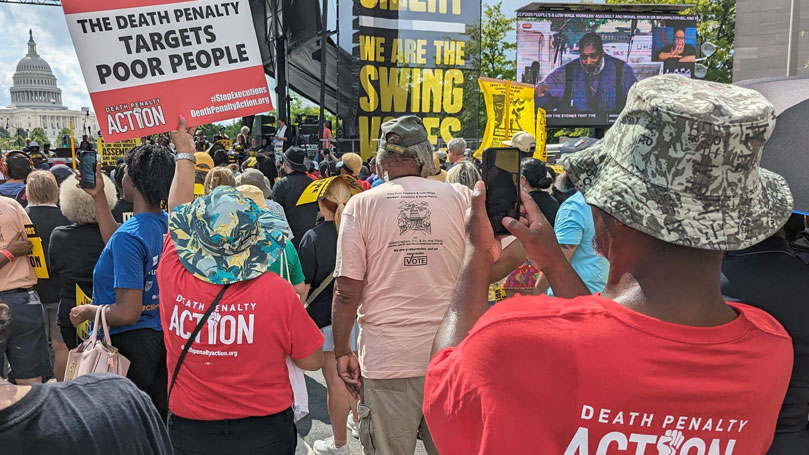
Of course, the injustices of the death penalty system do not only affect people of color. The system also discriminates against people living in poverty. All inmates are negatively affected by racial discrimination, arbitrary judicial override, the misconduct of police, juries, attorneys, and judges. It’s impossible to say with certainty how many innocent people have been executed in Alabama. But with 78 executions and nine exonerations in Alabama since 1976, we can establish an error rate, and it’s shocking. Nationally, for every eight executions of death row inmates, one has been exonerated. To put this in perspective, more than 1,600 people have been put to death in the U.S. since the mid-1970s.
There is no shortage of legal experts and citizens participating in the judicial system who have serious objections to the system at large and specifically to the death penalty. Among a number of op-eds from Alabama attorneys, former judges, and former governors, there are expressions of regret. Two former Alabama governors, Robert Bentley and Don Siegelman — one a Democrat and one a Republican — have expressed regret for executions performed during their terms. “As former Alabama governors,” they wrote, “we have come over time to see the flaws in our nation’s justice system and to view the state’s death penalty laws in particular as legally and morally troubling.”
Cruel and unusual
Part of what makes Alabama’s death penalty so egregious is the fact that the state’s executions themselves are often cruelly gruesome. Since 2018, there have been three failed and four botched executions. The details involved hours of poking, prodding, turning people upside down, multiple sticks with a needle, several surgical attempts to insert an IV — all as they write in agony. Some witnesses said all seven episodes were torturous. Victims of the three attempts had to receive medical care minus help with their pain.
To add to the controversy, in some cases there were no witnesses aside from execution staff. Governor Kay Ivey paused executions, ordering investigation into what caused the problems and tasking the Department of Corrections — the very department administering the executions — with conducting the investigation. Shortly afterward, she received a vague two-page report that there will be a little more training and everything should be fine. Executions resumed.
Lately, Alabama’s insistence on using nitrogen hypoxia to execute inmates has drawn fire seemingly from all points of the universe.
The first person in U.S. history to be executed using this experimental method was Kenneth Smith — incidentally, one of those death row inmates sentenced by judicial override. The jury on his trial had voted 11-1 for life in prison. Smith was forced to undergo a second execution using this never-before-used killing technique after an especially torturous botched execution. A highly unusual and cruel punishment, Smith was only the second person in U.S. history forced through a second execution process after a previous, failed attempt. The case went up to the U.S. Supreme Court, which denied a stay of execution despite dissent from three justices.
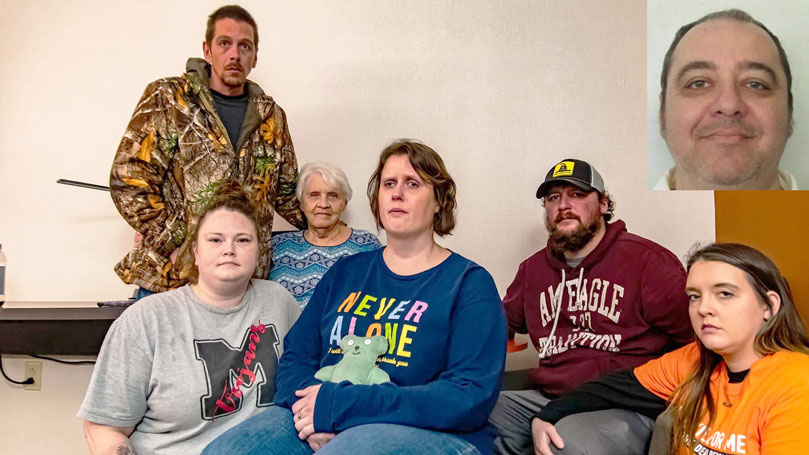
Furious objections abounded from the ACLU, the Equal Justice Initiative, the Death Penalty Information Center, the United Nations High Commissioner for Human Rights, the European Union, Amnesty International, university scholars and religious leaders. Many warned that the gas would not be a quick or humane way to go, that prisoners would not lose consciousness quickly, and would die from “conscious suffocation.” But the state of Alabama dug in its heels.
Supreme Court Justice Sonia Sotomayor responded to the Court’s decision to clear the way for Smith’s execution, writing, “Having failed to kill Smith on its first attempt, Alabama has selected him as its ‘guinea pig’ to test a method of execution never attempted before…This Court yet again permits Alabama to ‘experiment’ … with a human life.”
Witnesses said Smith’s whole body and head violently jerked back and forth for several minutes. He clenched his fists. His legs shook. He gasped for air, lifting his body against the restraints. He heaved and retched inside the mask, which filled with fluid. Smith was pronounced dead more than 30 minutes after the procedure began.
Alabama’s fourth nitrogen hypoxia execution is scheduled for February 6, 2025.
Innocent man on death row
Justice Sotomayor is also on the record objecting to SCOTUS’ 2013 decision to deny review of Mario Woodward’s case, another Alabamian sentenced to death by a judge who overrode the jury’s verdict of life. In dissent joined by Justice Stephen Breyer, Justice Sotomayor observed that Alabama “has become a clear outlier” on the issue of judicial override. She went on to ask why Alabama’s judges’ have a “distinctive proclivity” for overriding jury verdicts favoring life without parole. Her conclusion: “Alabama judges, who are elected in partisan proceedings, appear to have succumbed to electoral pressures.”
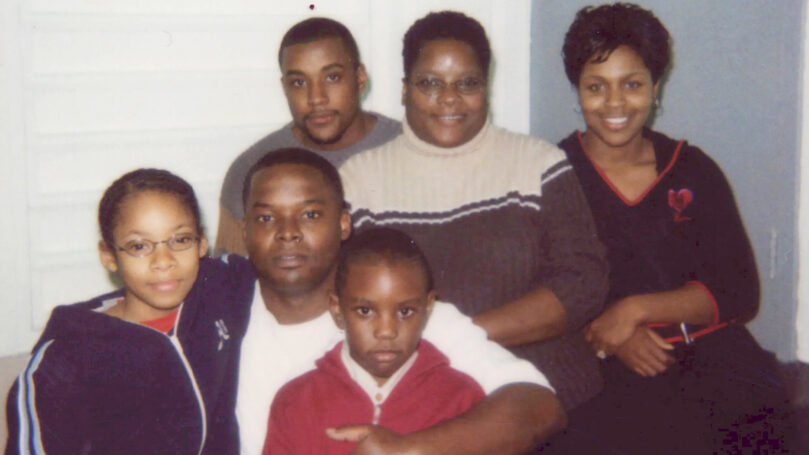
Meantime, Toforest Johnson continues his 27-year fight for a new trial. It’s a battle that could have been shortened when the state banned judicial override. If the amicus curiae brief filed in May, 2024 by the current district attorney in Birmingham, and joined by so many legal experts, helps convince the courts to grant a new trial for Johnson, he will start the whole process over again.
Even some in favor of the death penalty are on Johnson’s side. Former Alabama Attorney General Bill Baxley, a staunch, life-long supporter of the death penalty, lodged a protest to Johnson’s sentencing, calling for a new trial. He said the results of his examination of the facts revealed so many faults in the case he had no compunction about supporting Johnson. In his opinion, published four years ago by the Washington Post, “An innocent man is trapped on Alabama’s death row.”
The opinions of the author do not necessarily reflect the positions of the CPUSA.
Images: Toforest Johnson’s family members: daughter Shanaye Poole and cousin Tony Green with photos of Mr. Johnson by Bernard Troncale (Innocence Project); 30 inmates on death row in Alabama because of judicial override (Alabama Department of Corrections); Art from an individual on Alabama’s death row by Lee Hedgepeth (X); Activists with Death Penalty Action at a Poor People’s Campaign rally in DC (X); Kenny Smith’s family the night of his execution by nitrogen suffocation by Lee Hedgepeth (Tread News) / Kenneth Eugene Smith (Alabama Department of Corrections); Toforest Johnson with family, visiting him at Holman prison, courtesy of family of Toforest Johnson via Innocence Project


 Join Now
Join Now